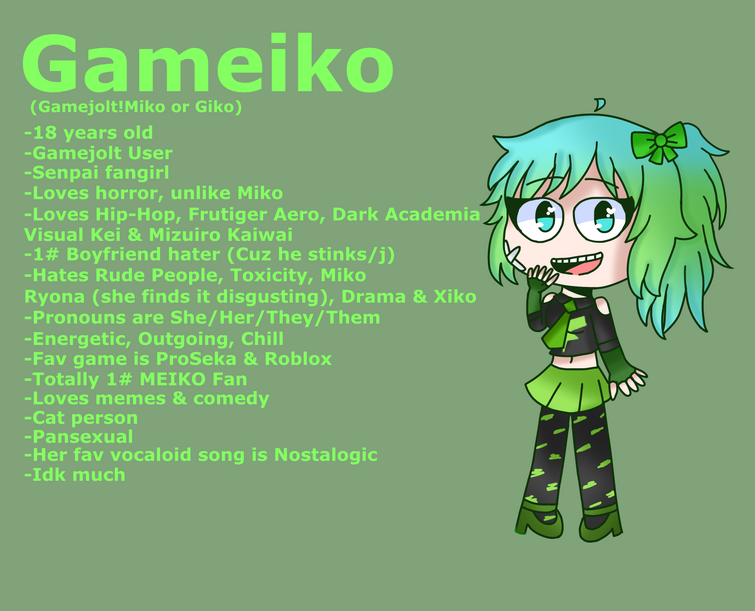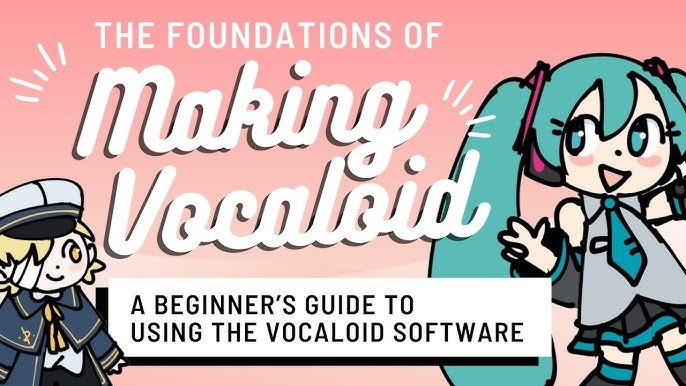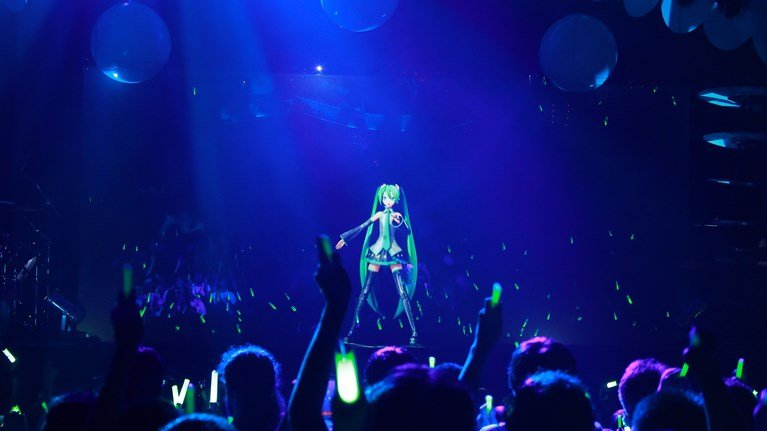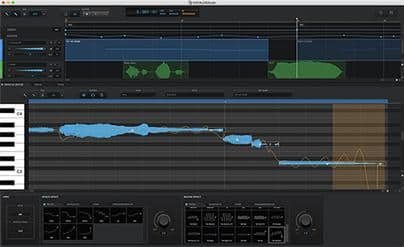Vocaloid has transformed the music world. It began with Meiko and now includes many modern icons.
The journey of Vocaloid is fascinating. It started in 2004 with Meiko, the first Japanese Vocaloid. Since then, Vocaloid technology has evolved, giving rise to a diverse range of virtual singers. These digital idols have captivated audiences globally. Vocaloid's influence spans across music genres, anime, and even live concerts.
This technology's history is rich and colorful, reflecting the creativity of its developers and users. From its early days to today's stars like Hatsune Miku, the story of Vocaloid showcases innovation and passion. Let's explore this unique musical evolution and discover how Vocaloid became a cultural phenomenon.

Credit: www.amazon.com
Origins Of Vocaloid
The world of Vocaloid has a rich and fascinating history. From its humble beginnings to becoming a global phenomenon, Vocaloid has captured the hearts of millions. Let’s delve into its origins and explore how it all started.
Early Developments
Vocaloid technology began as a collaborative project. It was developed by Yamaha Corporation and the Pompeu Fabra University in Spain. Their goal was to create a singing synthesizer application. The initial development phase started in the early 2000s. This innovative idea aimed to allow users to synthesize singing by typing in lyrics and melody.
Researchers focused on creating realistic vocal sounds. They wanted to produce voices that could sing any song. This required detailed analysis of human singing. The project was ambitious but full of potential.
First Vocaloid Release
The first Vocaloid software was released in 2004. It featured two voices: Meiko and Kaito. These voices were based on samples from professional singers. Users could create songs by entering notes and lyrics into the software.
Meiko was the first to be released in October 2004. Her voice was sampled from Japanese singer Meiko Haigō. Kaito followed in February 2006. His voice was sampled from Naoto Fūga.
| Release Year | Vocaloid | Voice Provider |
|---|---|---|
| 2004 | Meiko | Meiko Haigō |
| 2006 | Kaito | Naoto Fūga |
The early versions of Vocaloid were a success. They paved the way for future developments. Artists and music producers started using Vocaloid to create new and unique music.
In this early stage, Vocaloid gained popularity among niche communities. This laid the groundwork for its global reach. The technology continued to evolve, leading to the modern icons we know today.

Credit: skyverse.fandom.com
Introduction Of Meiko
The introduction of Meiko marked a significant milestone in the world of Vocaloid. As the first Japanese Vocaloid, she set the stage for a new era in music technology. Her impact is still felt in today's music industry.
Meiko's Launch
Meiko was launched by Crypton Future Media in 2004. She was the first Vocaloid to use the Yamaha Vocaloid engine. Her voice bank was sampled from the Japanese singer Meiko Haigō. This allowed Meiko to produce realistic and expressive vocals.
Her design featured a simple yet stylish outfit, which resonated with many fans. Meiko quickly gained popularity for her versatile voice. She could sing a variety of genres, from pop to rock. This versatility made her a favorite among music producers.
Impact On Music Industry
Meiko's launch had a profound impact on the music industry. She demonstrated the potential of Vocaloid technology. Musicians and producers found new ways to create music. They could now experiment with digital vocals without the need for a human singer.
Meiko's success paved the way for future Vocaloids. She showed that digital singers could be accepted and loved. This opened doors for more advanced Vocaloids, like Hatsune Miku. Today, Vocaloids are an integral part of music production worldwide.
Meiko's influence is seen in the growing Vocaloid community. Fans create songs, artwork, and even fan fiction. This vibrant community continues to celebrate Meiko and her contributions.
| Aspect | Details |
|---|---|
| Launch Year | 2004 |
| Developer | Crypton Future Media |
| Voice Provider | Meiko Haigō |
| Genres | Pop, Rock, etc. |
Meiko's legacy continues to inspire new generations. Her journey from the first Japanese Vocaloid to a music icon is a testament to her enduring appeal.
Rise Of Hatsune Miku
Hatsune Miku's rise to fame marked a significant milestone in the Vocaloid world. Released in 2007 by Crypton Future Media, Miku quickly became a global sensation. Her voice, created using Yamaha's Vocaloid 2 software, captured hearts worldwide. Let's delve into Miku's journey and her impact on culture.
Miku's Popularity
Hatsune Miku's popularity soared soon after her debut. Fans loved her unique voice and futuristic appearance. Her teal twin-tails became iconic. Thousands of songs were created using her voice. These songs spanned various genres, showcasing Miku's versatility.
Live concerts further boosted her fame. Despite being a virtual character, Miku performed on stage through holograms. Her concerts drew massive crowds, highlighting her widespread appeal. Fans from different countries attended these events, uniting in their love for Miku.
Cultural Phenomenon
Hatsune Miku became more than a virtual singer. She evolved into a cultural phenomenon. Her image graced merchandise, from toys to clothing. Collaborations with brands and artists proliferated. Miku's presence in video games and anime expanded her influence.
Her impact on internet culture is undeniable. Memes and fan art featuring Miku flooded social media. Communities dedicated to her music and persona thrived online. She inspired countless creators, leading to an explosion of user-generated content.
Miku's influence reached academic circles too. Researchers studied her impact on music and digital culture. She became a subject of numerous articles and studies. Hatsune Miku's legacy continues to grow, cementing her place in modern culture.

Credit: www.amazon.com
Vocaloid Software Evolution
Vocaloid software has come a long way since its inception. This evolution showcases the blend of technology and creativity. From Meiko's debut to the icons we know today, Vocaloid's journey is fascinating. Let’s delve into how the software has evolved over the years.
Technological Advancements
The early versions of Vocaloid software were groundbreaking. They used synthesis technology to generate human-like singing. Yamaha's first Vocaloid engine set the foundation. It allowed users to input lyrics and melodies. The engine then produced vocal tracks.
As technology improved, so did Vocaloid software. The engines became more sophisticated. They offered better sound quality and realism. This attracted many music producers and hobbyists. Each new version brought noticeable enhancements. The software kept pushing the boundaries of what’s possible.
New Features
Over time, new features enriched the Vocaloid experience. One major addition was the ability to customize voice tones. Users could adjust pitch, tone, and timbre. This made the voices more expressive and versatile.
Another exciting feature was the introduction of multi-language support. Initially, Vocaloid was limited to Japanese. Now, it supports multiple languages. This broadened its appeal globally. Singers could perform in English, Chinese, and Spanish.
The user interface also saw significant improvements. Early versions had a steep learning curve. Newer versions are more user-friendly. They feature intuitive controls and helpful tutorials. This makes it easier for beginners to start creating music.
Vocaloid software also embraced third-party plugins. These plugins added more effects and customization options. Users could enhance their tracks with minimal effort. The software's flexibility grew with each update.
Each new version of Vocaloid software builds on the past. It incorporates user feedback and technological advancements. This continuous evolution keeps Vocaloid relevant and exciting.
Expansion Of Vocaloid Characters
The expansion of Vocaloid characters has been a fascinating journey. What started with Meiko has grown into a diverse universe of voices and personalities. This evolution has brought new dimensions to the Vocaloid community. Let's explore how the characters have diversified and gained global appeal.
Diverse Voices
Vocaloid characters now have voices that fit many music genres. Each character has a unique tone and style. This diversity allows for a rich variety of music. Fans can choose characters that match their musical preferences. Some voices are soft and gentle. Others are powerful and energetic. This range keeps the Vocaloid world fresh and exciting.
Voice diversity also means more representation. Singers from different cultures and backgrounds can find a voice that resonates with them. This inclusivity helps the Vocaloid community grow. It invites more people to join and enjoy the music.
Global Appeal
Vocaloid characters have crossed borders. They have fans all over the world. This global appeal is thanks to the internet. Fans share music and videos online. Social media platforms help spread the word. Vocaloid concerts are held in many countries. These events attract large crowds and showcase the global love for Vocaloid.
Language barriers are less of an issue with Vocaloid. Many characters can sing in multiple languages. This feature broadens their reach. Fans can enjoy songs in their native language. It also encourages learning new languages through music. The global appeal of Vocaloid continues to grow, uniting fans from different parts of the world.
Vocaloid In Live Performances
Vocaloid technology has transformed from a simple voice synthesis tool into a global phenomenon. One of the most exciting aspects of Vocaloid is its integration into live performances. These events bring virtual singers to life, captivating audiences worldwide. Let's explore how Vocaloid has impacted live music and concerts.
Concert Innovations
Vocaloid concerts use cutting-edge technology to create lifelike performances. Holograms and advanced projection systems allow virtual singers to perform on stage. These holograms are synchronized with music, creating an immersive experience. Lighting and special effects add to the visual spectacle. The result is a concert that feels futuristic and unique.
One popular innovation is the use of motion capture. Real dancers' movements are recorded and translated to the virtual performers. This adds a layer of realism to the performance. The audience sees a virtual singer moving with human-like grace. This combination of technology and creativity sets Vocaloid concerts apart.
Audience Reception
Audiences have responded enthusiastically to Vocaloid live shows. Fans enjoy seeing their favorite virtual singers in a live setting. The energy and excitement at these concerts are palpable. Many fans travel great distances to attend these events.
Vocaloid concerts often sell out quickly. This demonstrates the strong demand for live performances. Fans appreciate the unique blend of music and technology. They also enjoy the community aspect of these events. Meeting other fans and sharing the experience creates a sense of belonging.
Overall, Vocaloid in live performances has become a cultural phenomenon. The innovative use of technology and the enthusiastic audience reception make these concerts unforgettable.
Vocaloid And Fan Community
The Vocaloid phenomenon has evolved significantly since its inception. One of the most fascinating aspects is its vibrant fan community. This community has not only embraced the technology but has also contributed immensely to its growth and popularity. Let's explore how fan creations and collaborations have shaped the Vocaloid landscape.
Fan Creations
Fans have played a crucial role in the evolution of Vocaloid. They create music, art, and stories, pushing the boundaries of creativity. Here are some ways fans contribute:
- Music Production: Fans compose songs using Vocaloid software, often sharing them on platforms like YouTube and Nico Nico Douga.
- Fan Art: Artists draw Vocaloid characters, contributing to the visual culture surrounding the software.
- Fan Fiction: Writers craft stories featuring Vocaloid characters, adding depth to their personalities.
- Cosplay: Enthusiasts dress up as their favorite Vocaloids, showcasing their love at conventions and online.
These creations have helped Vocaloid gain a dedicated following. They also ensure a continuous flow of fresh content, keeping the community vibrant and engaged.
Collaborations
Collaborations between Vocaloid creators and various artists have opened new avenues for the technology. These partnerships can be seen in:
- Music Albums: Producers collaborate with professional musicians to create albums featuring Vocaloid voices.
- Live Concerts: Holographic concerts where Vocaloid characters perform live, often alongside human artists.
- Commercial Projects: Companies use Vocaloid in commercials, video games, and movies, reaching wider audiences.
- Cross-Media Initiatives: Vocaloid characters appear in manga, anime, and other media, expanding their influence.
These collaborations have significantly increased the visibility of Vocaloid. They demonstrate the versatility and potential of this unique technology.
Modern Vocaloid Icons
Modern Vocaloid Icons have reshaped digital music. From sleek designs to powerful voices, these virtual stars have captured hearts globally. Their influence spans across genres and cultures, making them vital in the music industry.
Current Stars
Hatsune Miku stands as a pivotal figure. She is known for her teal twin-tails and distinctive voice. Miku has performed live concerts with holographic technology. She has collaborations with major artists worldwide.
Kagamine Rin and Len are another iconic duo. Their voices complement each other perfectly. They offer a dynamic range of songs. Their popularity keeps growing with each new release.
Megurine Luka brings a mature, bilingual voice to the scene. She sings in both Japanese and English. This versatility makes her a favorite for many international fans. Her songs range from pop to jazz, showing her wide appeal.
Future Trends
Artificial intelligence will likely play a big role. AI can improve voice synthesis. This technology will make Vocaloids sound more human. It will also allow for greater emotional depth in songs.
New Vocaloid characters will continue to emerge. Each with unique traits and voices. Diversity in Vocaloid personalities will keep the audience engaged. Fans will have more choices and variety in the music they enjoy.
Interactive concerts will become more common. Enhanced by virtual reality, these experiences will feel more immersive. Fans will feel closer to their favorite Vocaloid stars. This trend will redefine live performances.
Frequently Asked Questions
What Is Vocaloid?
Vocaloid is a voice synthesis software developed by Yamaha. It allows users to create singing vocals using pre-recorded voices.
Who Was The First Vocaloid?
The first Vocaloid was Meiko, released in 2004. She was followed by Kaito, another early Vocaloid.
How Does Vocaloid Work?
Vocaloid uses recorded vocals from voice actors. These recordings are then synthesized to create singing in various styles.
What Are Some Popular Vocaloid Characters?
Popular Vocaloid characters include Hatsune Miku, Kagamine Rin and Len, and Megurine Luka. They have large fanbases.
Conclusion
Vocaloid has truly evolved since Meiko's debut. The journey fascinates many fans. From early pioneers to modern icons, each Vocaloid leaves a mark. Their voices create endless possibilities in music. Fans around the world enjoy their unique sounds. The Vocaloid community continues to grow strong.
Future advancements will surely bring more excitement. Vocaloid's history is rich and ongoing. Stay tuned for more musical innovations.








